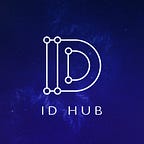eID vs Blockchain ID, who shall emerge as the future winner?
Since the beginning of the 21st century, The debate about the Internet in industry and academia is increasingly moving beyond the optimistic assumptions about early technology development. It has become the consensus of governments to include the Internet in governance. Countries have started to enhance their national capacity in the Internet era by making governance plans and strengthening their capacity of identity governance.
At present, eID based on cryptographic technology has become the mainstream solution for implementing ID authentication schemes in countries around the world. With the rapid development of blockchain technology, it provides another feasible technology solution for identity governance, thus self-sovereign ID comes into view.
eID becomes the mainstream identity technology framework
From the development of eID, Europe is the first region to start online identity authentication. The European Union will promote online identity authentication as a long-term initiative to maintain cyber security and promote the management of cross-border migration of European people. As early as 1998, the European Union launched the fifth technology development and demonstration research framework (FP5), which conducted online identity management research on issues such as e-government and privacy protection.
In 2005, the European Union required national governments to take the lead in building eID management system, and required national eID to be recognized and shared among member states, and to be widely applied in the field of e-government and e-commerce. At present, there are 17 countries that have established eID framework in their own countries, but the pan-European identity authentication system is still not established, that is to say, eID of all countries still cannot achieve mutual recognition and interoperability.
eID digital identity system mainly includes two major parts, one is differentiation, the other is authentication. The differentiation is to provide citizens with the corresponding digital ID in the digital space, and they should have their own digital ID when entering the digital space. What people keep in the physical social archives is the citizenship number, while in the digital society, digital ID should be used as much as possible in order to better protect personal privacy,
Although eID, a network authentication system based on national citizenship, emphasizes the principle of one-to-one accuracy, it has obvious passivity in dealing with the information flow in the Internet era, especially with the emergence of global population mobility issues such as refugees, therefore, such authentication system still lags in governance capacity. The state need to take advantage of the power of Internet enterprises to improve its own authentication capacity in key areas, which leads to the increased difficulty of supervision of the authentication system.
In addition, the Internet governance resources are centrally stored in the database of a few large Internet enterprises, and they are owned by these large enterprises. The high barriers between the systems are severely fragmented, which has become one of the biggest obstacles to the globalization of online identity authentication.
Can an upgrade to blockchain ID be enough to outstrip eID?
Identity authentication can be divided into three stages: Stage 1, Traditional ID authentication adopts offline identity authentication; Stage 2, eID adopts centralized digital authentication technology, which is the online single point authentication; Stage 3, Blockchain ID adopts blockchain authentication technology, which is a network platform for identity authentication service in the future digital era.
Although eID is now in vogue, the blockchain ID has attracted a lot of attention from governments and enterprises, and some have taken the lead. Government have generally been more cautious in embracing emerging technologies, but surprisingly, some governments have been quick to respond to blockchain ID management solutions.
Last summer, Illinois moved to deploy blockchain technology in land registration and birth certificates digitalization. The birth certificate digital pilot program is a collaboration between the state government and Evernym, which allows governments and enterprises to verify citizenship by providing encrypted access to verifiable claims. In late August, the Brazilian Ministry of Planning partnered with Microsoft and ethereum blockchain company ConsenSys to explore ID management use cases.
At present, there are still some problems to be solved for the landing of blockchain ID platform. For instance, many blockchain ID systems rely on decentralized identifiers (DIDs), which hold unique metadata that proves ownership of a particular ID. So, in Illinois’ birth certificate proof-of-concept, the actual birth certificate does not get stored on the blockchain, and the DIDs are meaningless outside one interaction.
With an ever-increasing number of blockchains, the self-sovereign ID management platform will eventually realize cross-chain, and become a common infrastructure across different underlying protocols. However, the interoperability between different chains and protocols needs to be solved urgently.
The development of digital identity from 1.0 to 2.0 times has realized the transfer from offline to online, and then blockchain will be the rise of the Internet a “new world” of the great maritime era. Blockchain not only provides a new technological path for digital identity intercommunication and recognition across domains, geographies and ethnicities, it will also realize the ultimate goal that an ID can travel across the globe.
